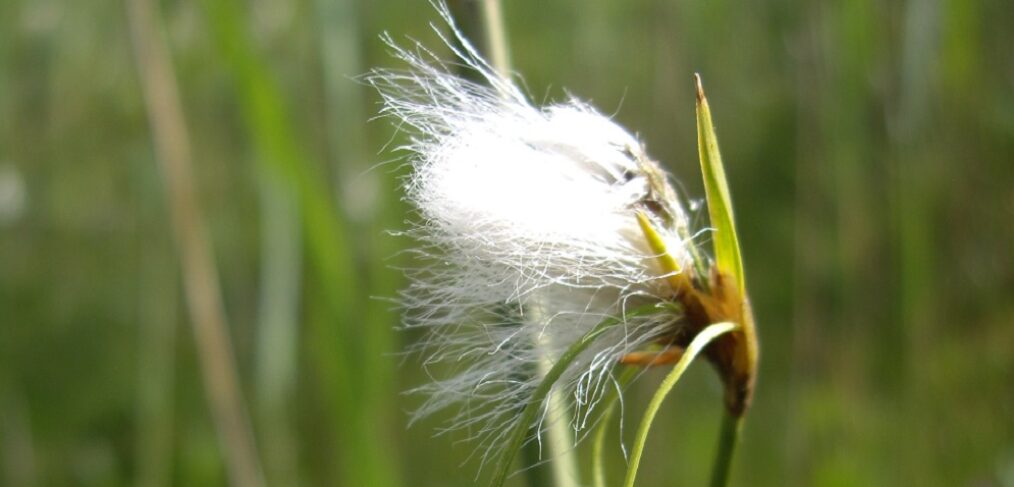
species of the week #86 – slender cottongrass
Do you know pioneer plants? This is the name given to plants that are the first to colonise open spaces. The slender cotton grass (Eriophorum gracile) is such a pioneer plant. Because of its fast growth and its undemanding nature, it is often used in peatland restoration. Its use creates suitable conditions for more demanding bog plants. However, slender cotton grass is also a indicator plant, i.e. a plant that indicates certain soil properties. And that makes it almost even more valuable for bog restoration.
| Distribution status in Rhineland-Palatinate | threat with extinction |
| Remaining deposit | Bavaria, Mecklenburg Lake District |
| Last sighting in rhineland-palatinate | 2016 in Trippstadt |
| Habitat | fens |
| Threat | Drainage of bogs, nutrient input |
The slender cotton grass is bound to very wet moor soils. It reacts to even slight drainage by collapsing its population, making it a sensitive indicator of wetness. In the case of peatland restoration, it is sometimes not easy to see whether the peatland can hold the accumulated water. Here the slender cottongrass is a good help: wherever cottongrass grows, the soil is wet enough; where it does not grow, there is still water loss or other bog damage.
A clear distinguishing feature of slender cottongrass are the rough spikelet stems, which are very densely covered with short hairs. The inflorescence, which only develops the characteristic, pure white tuft of hairs when the fruit ripens, consists of 2-4 relatively short-stemmed spikelets, each with its own white tuft at the end.
If mown irregularly or not at all, slender cottongrass is displaced by more competitive species. Mechanical mowing requires a lower water table than the cotton grass can tolerate. Therefore, only mowing with special machines or by hand is an option, which makes the protection of slender cottongrass a demanding task. The following maintenance measures have proven successful so far: One-time maintenance mowing in late summer or autumn; usually by special machines with low ground pressure (motor mower or caterpillar mower) as well as closing drainage ditches or setting out pump-out devices at growth sites. Grazing is a good alternative.
Germany bears a high international responsibility for the conservation of the species. The formerly numerous occurrences in the Allgäu have declined to about a dozen. Nevertheless, the most important populations are found here and in the central Alpine foothills. In order to preserve the few remaining populations, additional nutrient inputs must be consistently prevented and water must be retained in the growth area.
Image: By Mathilde DUVERGER [CC BY-SA], via Tela Botanica – https://api.tela-botanica.org/img:000091757O.jpg, CC BY 2.5, https://commons.wikimedia.org/w/index.php?curid=60563685
Click here for more exciting species of the week
